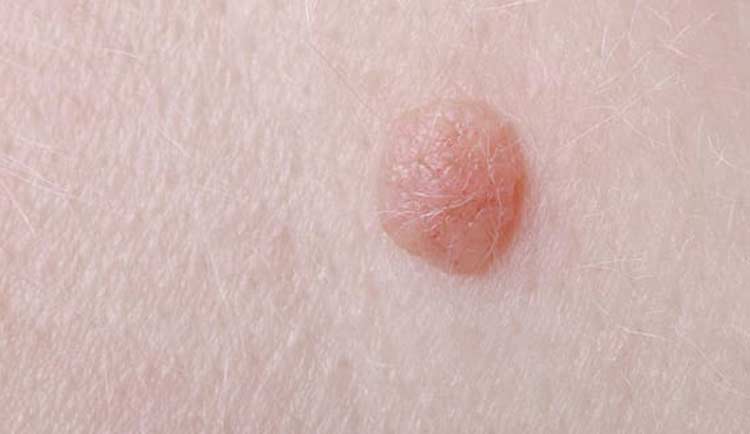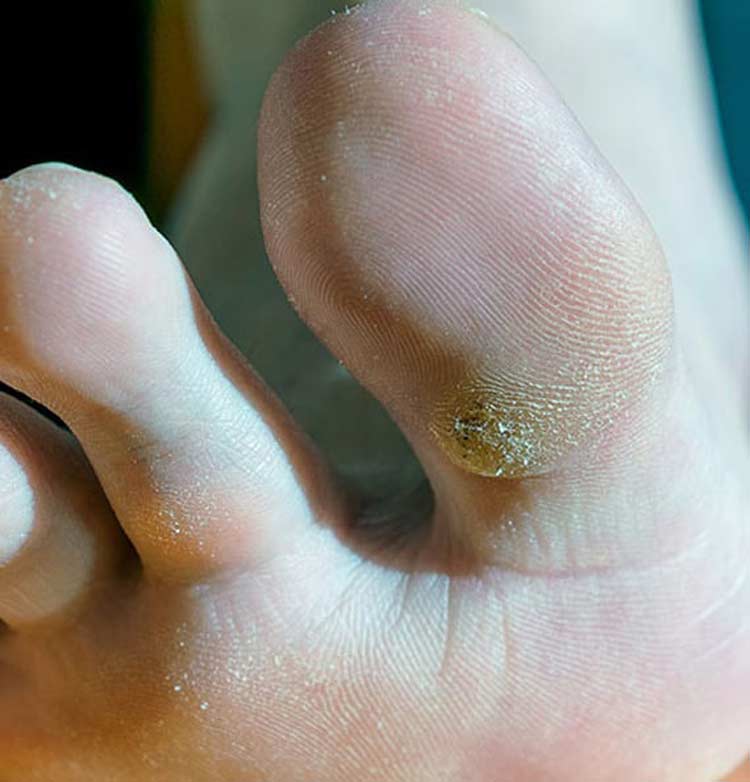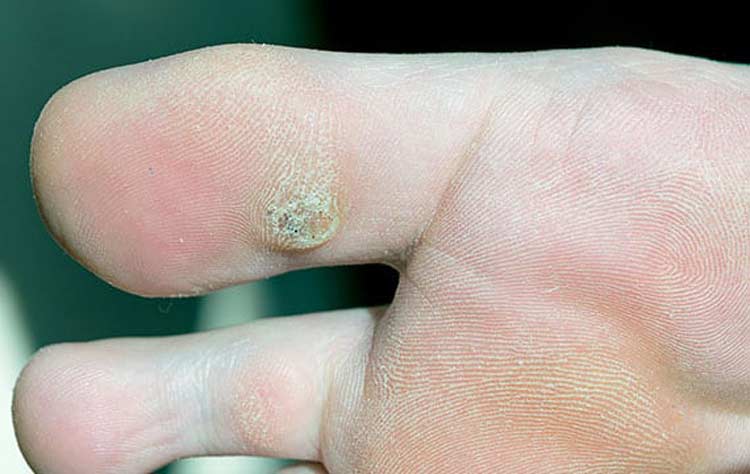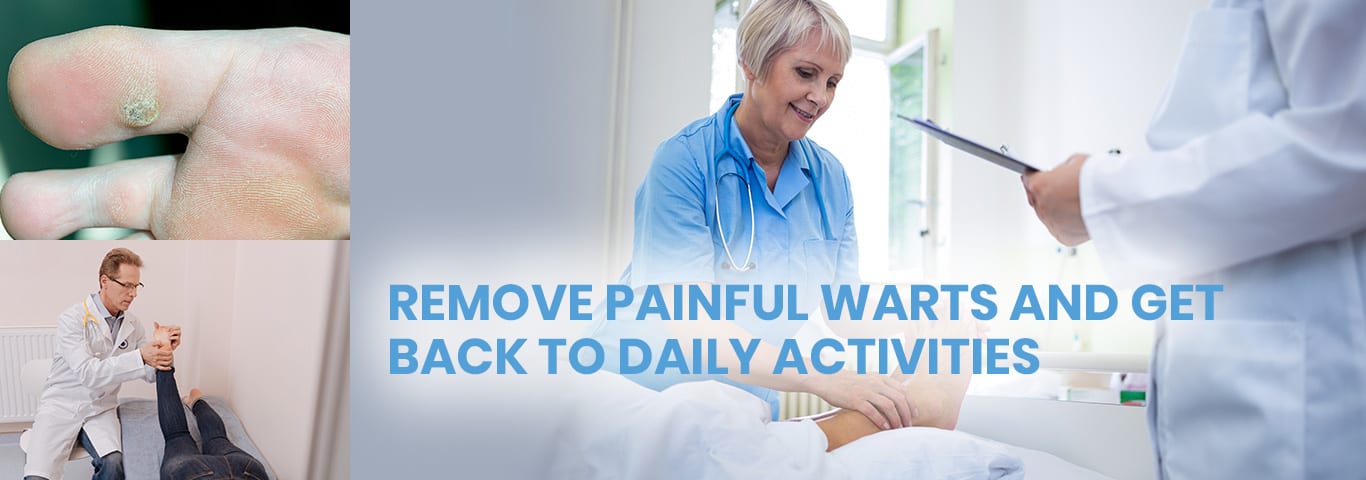
Discover how we can help you find relief from plantar warts.
Caused by a virus called human papillomavirus (HPV), warts are growths that sometimes appear on skin. Rough to the touch, these growths usually appear on hands and fingers. However, it is possible for warts to develop on feet. Smaller warts called plantar warts are the growths of this nature that sometimes appear on heels and other weight-bearing areas of feet.
- Warts will usually disappear with little or no intervention.
- There are also times when it’s best to have warts on feet removed by a podiatrist if these growths are making it painful to walk, wear shoes, or perform daily activities.
What Causes Warts?
The HPV virus is the main cause of all types of warts, including the ones that commonly affect feet. Simply coming into contact with someone with warts won’t necessarily transmit the HPV virus. The strains of HPV that cause plantar warts aren’t highly contagious, so it’s not as easy to get warts on your feet from contact with other infected individuals. But the virus does thrive in moist environments such as what’s normally found around pools and in locker rooms. The virus gets into the skin on feet, or any other part of the body, through a break or cut in the skin.
Signs and Symptoms of Warts
Warts that appear on feet usually show up as small growths or grainy bumps. They often develop on the soles of the feet by the bottom of toes or on the heel. If a wart grows inward, you may notice a patch of hardened skin known as a callus over the area. Warts frequently have tiny black dots (“wart seeds”) inside of them, which are actually clotted blood vessels. Symptoms may also include:
- A visible lesion disrupting the normal ridges and lines of feet
- Discomfort when standing or walking
- Tenderness or pain in the affected area


When Should You See a Podiatrist?
If self treatments or over-the-counter medications aren’t working or you’ve reached a point where the lesion is painful or irritated, it’s a good idea to see podiatrist. It’s also best to see a foot doctor if you have nerve damage or circulation issues related to diabetes or have another foot condition that may be aggravated by warts. You may also want to visit a podiatrist if you have a weakened immune system or if you’re not sure if the lesions are warts.
How Are Warts Diagnosed?
In addition to examining the growth, a podiatrist may cut away a smart part of the lesion to look for tell-tale black dots if they aren’t noticeable from a visual inspection. A tissue sample called a shave biopsy may also be collected and tested if there is some doubt about the nature of the growth.
Treatments
Without medical intervention, it can sometimes take a few years and repeated use of over-the-counter treatments to completely get rid of warts on feet. If warts are causing pain, a podiatrist may recommend faster treatment and removal options. Prescription-strength wart medications for warts that have salicylic acid may stimulate your immune system. Doing so sometimes speeds up the healing process and minimizes or eliminates the lesion.
Some patients see positive results with cryotherapy, which involves the use of freezing medication that causes blistering around the wart. “Freezing” is a treatment that’s usually only recommended if other treatment attempts aren’t effective. Involving the application of liquid nitrogen to the affected area, cryotherapy is typically an in-office procedure that’s performed along with the use of a numbing medication. It usually takes a week or so to see results with freezing. Other treatment possibilities include:
- Immune therapy
- HPV vaccine
- The use of trichloroacetic acid
Is Surgery an Option?
Warts are sometimes removed with a special electric needle during a procedure that also involves use of a numbing medication. Another option is laser treatment. This treatment targets the tiny blood vessels in warts. The procedure ultimately causes the lesions to die and fall off.
Children and teenagers are more susceptible to developing the kind of warts that usually appear on feet, although anyone may get them. Not walking barefoot on moist surfaces, keeping your feet dry and clean, and changing your socks daily or when they’re wet are some of the steps you can take to reduce your risk of developing warts. Also, don’t use the same pumice stones or similar products you may use on areas with warts as you do in areas with normal skin. Finally, avoid the temptation to pick or scratch warts. Doing so can spread the virus, create an open sore, or contribute to other foot irritations.

